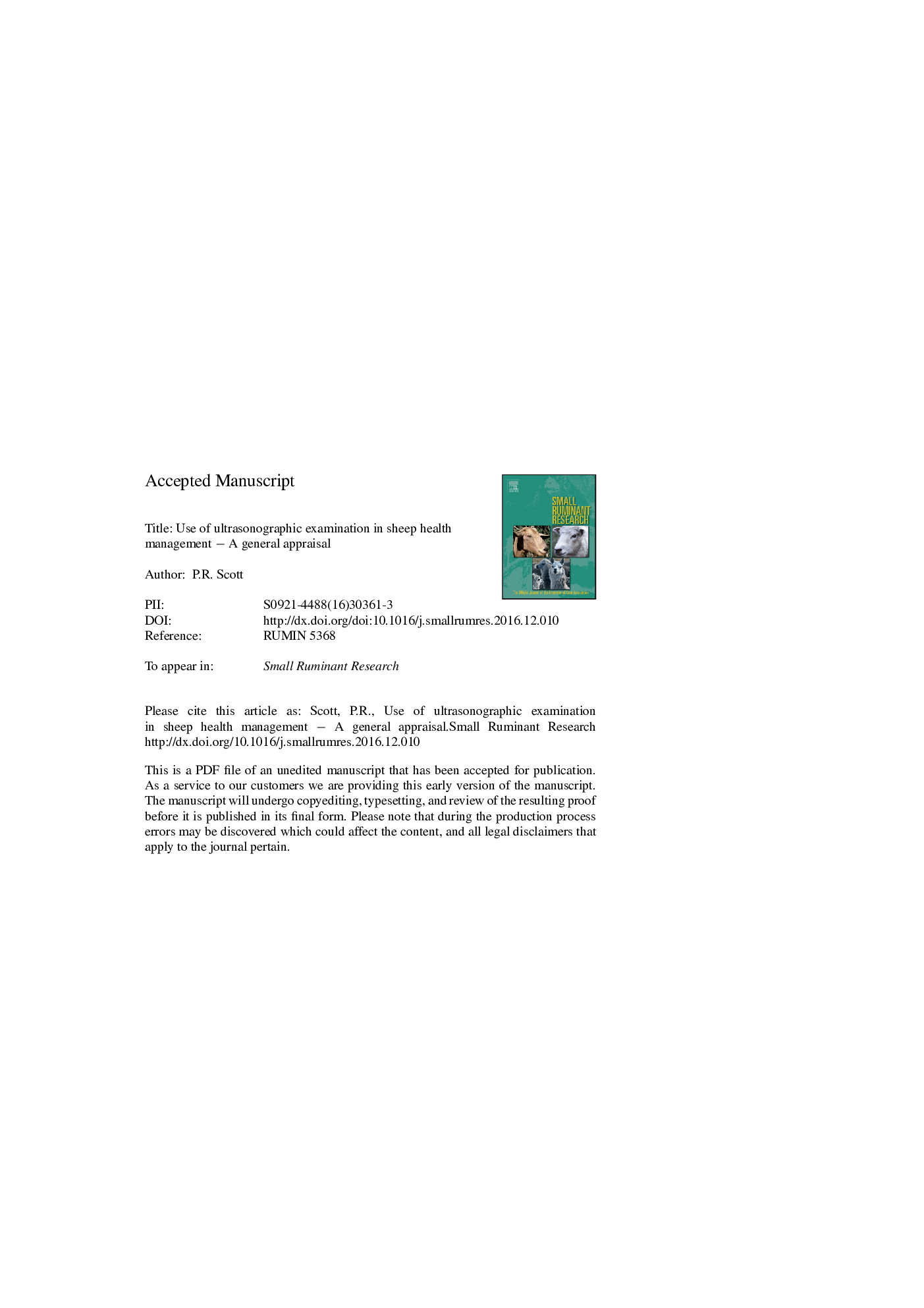| کد مقاله | کد نشریه | سال انتشار | مقاله انگلیسی | نسخه تمام متن |
|---|---|---|---|---|
| 5544139 | 1554340 | 2017 | 37 صفحه PDF | دانلود رایگان |
عنوان انگلیسی مقاله ISI
Use of ultrasonographic examination in sheep health management-A general appraisal
ترجمه فارسی عنوان
استفاده از معاینه اولتراسونوگرافی در مدیریت سلامت گوسفند - ارزیابی کلی
دانلود مقاله + سفارش ترجمه
دانلود مقاله ISI انگلیسی
رایگان برای ایرانیان
کلمات کلیدی
تشخیص، مرض، بز یک سلامت، گوسفند، کمی گرسنگی، سونوگرافی،
موضوعات مرتبط
علوم زیستی و بیوفناوری
علوم کشاورزی و بیولوژیک
علوم دامی و جانورشناسی
چکیده انگلیسی
Accurate ultrasonographic determination of foetal number between 45 to 90Â days of gestation has revolutionised reproductive management in sheep over 30 years ago and is now established as an essential component of flock health planning and productivity. Ultrasonographic measurements of fat and muscle depths over ribs 12 and 13 in growing lambs can accurately reflect carcass composition and have been incorporated in breeding programmes in sheep meat breeds. These ultrasound services may often be delivered by para-professionals, who individually scan tens of thousands of sheep annually. Currently, ultrasonographic examination in small ruminant practice is largely confined to the investigation of individual valuable pedigree animals referred to veterinary schools or other centres of expertise, despite publication of clinical papers illustrating its application in a wide range of common diseases, including respiratory diseases, urolithiasis, liver and kidney pathologies. Typically, ultrasonographic examination of any organ system should take no more than 1-2Â min with the results available immediately, affording a much more informed diagnosis and prognosis. Presently, examination of all adult sheep in the flock for ovine pulmonary adenocarcinoma is being researched in an attempt to eliminate this disease, which has no commercially available diagnostic test or obvious flock control measure. Ultrasonographic investigation is much cheaper than common clinical biochemistry tests, e.g., haematological examination or protein measurements (albumin and globulin, acute phase proteins, fibrinogen and haptoglobin). The ability to record ultrasonographic findings as images or video files directly to mobile telephones, tablets and laptops allows clinicians to transmit such data to a specialist should a second opinion prove necessary. Tele-medicine is well established in several veterinary disciplines and will become increasingly common for diagnostic imaging in small ruminant practice during the next decade. Comparison of images collected over a period of time allows a disease process to be accurately monitored. Re-evaluation of ultrasonographic recordings is an invaluable learning exercise should necropsy results become available.
ناشر
Database: Elsevier - ScienceDirect (ساینس دایرکت)
Journal: Small Ruminant Research - Volume 152, July 2017, Pages 2-9
Journal: Small Ruminant Research - Volume 152, July 2017, Pages 2-9
نویسندگان
P.R. Scott,
